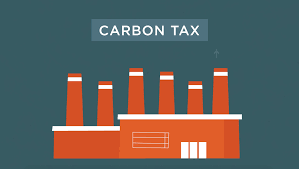[texte français suit dessous]
 Video: The Mirror-Neuron Initiative
Video: The Mirror-Neuron Initiative
I. CCTV to Inform, Mobilize and Sensitize the Public. Recruit the public to monitor and enforce existing animal husbandry regulations through public crowd-sourcing as well as to sensitize the public to the reality of what is currently permissible in animal husbandry.
Mandatory 24/7 CCTV surveillance and recording in all venues where animals are bred, raised, housed, transported, used in any way, or killed.
All the CCTV data are live-streamed and permanently archived as openly accessible on the web, coded for time and location, so that the public can witness, monitor and report any observed abuses within the existing welfare rules as well as to recommend what rules need to be strengthened.
(Note, that II — legislation — is not possible without I — sensitization — first. Only public demand and support can lead to the adoption of II.)
 II. Legislate Graduated Tax to Incentivize Transition to Non-Animal Alternatives. Implement, facilitate and accelerate a transition to non-animal alternatives.
II. Legislate Graduated Tax to Incentivize Transition to Non-Animal Alternatives. Implement, facilitate and accelerate a transition to non-animal alternatives.
Graded tax, increasing with time, on all consumer purchases of meat, fish, dairy or eggs in supermarkets or restaurants, or any other animal products (such as fur, leather, wool, down). All tax revenue is used as discount on the purchase of non-animal alternatives.
Graded tax on all production and vending of meat, fish, dairy or eggs, or any other animal products (such as fur, leather, wool, down). All tax revenue can be claimed by producers and vendors as rebate for the production and sale of non-animal alternatives.
All unclaimed surplus from the tax revenue is used to provide sanctuaries for animals that survive from the food and fur industries.
Harnad, S (2013) Luxe, nécessité, souffrance: Pourquoi je ne suis pas carnivore. Québec humaniste 8(1): 10-13 http://j.mp/15JnWHw
Harnad, S (2014) Taste and Torment: Why I Am Not a Carnivore. Québec Humaniste http://eprints.soton.ac.uk/377684/
Harnad, S (2014) Animal pain and human pleasure: ethical dilemmas outside the classroom. LSE Impact Blog 6/13 June 13 2014 http://blogs.lse.ac.uk/impactofsocialsciences/2014/06/13/ethical-dilemmas-animal/
Bekoff, M & Harnad, S (2015) Doing the Right Thing: An Interview With Stevan Harnad. Psychology Today Blog. January 2015. http://eprints.soton.ac.uk/373876/
Harnad, S (2015) Pour fermer les abattoirs, il faut les ouvrir. Le Huffington Post Québec 25/6/2015 http://quebec.huffingtonpost.ca/stevan-harnad/droits-animaux-cruaute-animale-lois-abattage-abattoirs_b_7659206.html
Harnad, S (2015) To Close Slaughterhouses We Must Open People’s Hearts. HuffPost Impact Canada http://www.huffingtonpost.ca/stevan-harnad/vegan-animal-welfare_b_7702020.html
Harnad, S (2016) Animal sentience: The other-minds problem Animal Sentience. 2016.001 http://animalstudiesrepository.org/animsent/vol1/iss1/1
Harnad, Stevan (2016) CCTV, web-streaming and crowd-sourcing to sensitize public to animal suffering. Animal Justice UK, 2, Winter Issue http://alaw.org.uk/wp/wp-content/uploads/Animal-Justice-UK-Issue-2.pdf
Proposition stratégique pour une transition globale vers les alternatives non-animales
I. La CCTV pour informer, mobiliser et sensibiliser le public. Recruter le public pour surveiller et appliquer les réglementations existantes en matière d’élevage par le biais du web-streaming et croud-sourcing, ainsi que pour sensibiliser le public à la réalité de ce qui est actuellement permis en élevage.
Surveillance CCTV 24/7 obligatoire et enregistrement dans tous les lieux où les animaux sont engendrés, élevés, hébergés, transportés, utilisés de quelque manière que ce soit, ou tués.
Toutes les données de vidéosurveillance sont diffusées en direct et archivées en permanence en accès ouvert sur le Web, codées selon le temps et l’emplacement, afin que le public puisse témoigner, surveiller et signaler tout abus observé contre les règles de bien-être existantes ainsi que pour pouvoir recommander que les règles soient renforcées.
(Noter que II – législation – n’est pas possible sans I – sensibilisation – d’abord. Seuls la demande et le soutien du public peuvent conduire à l’adoption de II.)
II. Légiférer une taxe graduée pour inciter à la transition vers des solutions alternatives non-animales. Mettre en œuvre, faciliter et accélérer la transition vers des alternatives non-animales.
La taxe graduée, augmentée avec le temps, sur tous les achats de viande, de poisson, de produits laitiers ou d’oeufs dans les supermarchés ou les restaurants, ou tout autre produit animal (comme la fourrure, le cuir, la laine, le bas). Tous les revenus fiscaux sont utilisés comme rabais sur l’achat d’alternatives non-animales.
Taux de taxe sur toute production et vente de viande, poisson, produits laitiers ou oeufs, ou tout autre produit animal (comme la fourrure, le cuir, la laine, le bas). Tous les revenus fiscaux peuvent être réclamés par les producteurs et les vendeurs comme remise pour la production et la vente d’alternatives non-animales.
Tous les excédents non réclamés provenant des recettes fiscales sont utilisés pour fournir des sanctuaires aux animaux qui survivent de l’industrie alimentaire et de la fourrure.
